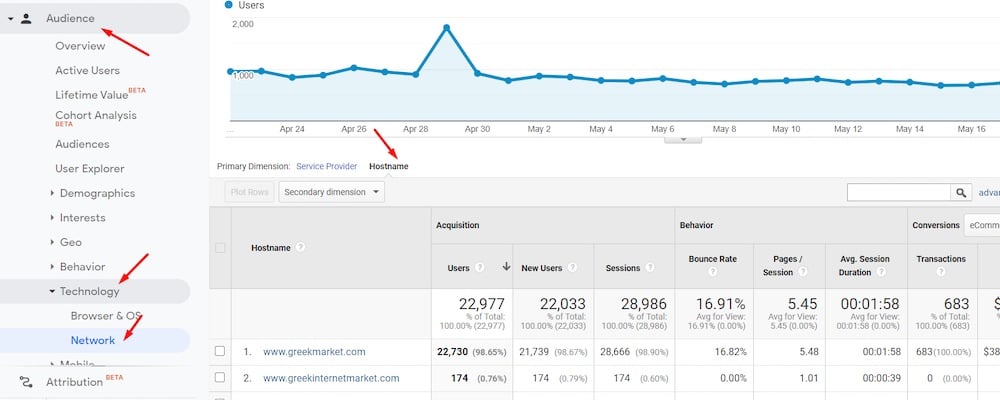How In Which Order Does Google Analytics Filter Data can Save You Time, Stress, and Money.
All About In Which Order Does Google Analytics Filter Data
Table of ContentsThe 45-Second Trick For In Which Order Does Google Analytics Filter DataNot known Factual Statements About In Which Order Does Google Analytics Filter Data In Which Order Does Google Analytics Filter Data Fundamentals Explained10 Easy Facts About In Which Order Does Google Analytics Filter Data ShownThe Single Strategy To Use For In Which Order Does Google Analytics Filter DataThe 20-Second Trick For In Which Order Does Google Analytics Filter Data
io" is the internet site and also if I go to the homepage and also click a few other pages like signup web page, it reveals me in the real-time report popping-up as how we set up in the filters. This page is the of website as well as you can see the sub-domain highlighted as.
Comparable to the previous process, we need to develop a new filter as stated in the last steps - In Which Order Does Google Analytics Filter Data. in this new filter, I'm naming it as and I'm picking After that I'm inputting the filter pattern as In this filter pattern, the pipe icon () is included to attach any type of other hostname that you desire to consist of in addition to the various other hostnames
The Of In Which Order Does Google Analytics Filter Data
This is how you can go examine your internet site and also return view in real-time reports. The real-time report currently shows the adjustments that you made when developing that filter. In this situation, the Fractured web page clarifies concerning URL of the web page i. e when the Page URL being duplicated the exact same, excluding slash or any kind of minute aspects.
Currently create a brand-new filter and I call it as. Choose as well as select the filter fields.

Facts About In Which Order Does Google Analytics Filter Data Uncovered
The complying with guidelines will certainly stroll you via the procedure: Develop a new Google Spreadsheet (or open up an existing one). From the menu bar choose: Attachments > Obtain Add-ons Locate the Google Analytics Add-on from the add-ons gallery as well as choose it. From the add-on next page description web page, click the "+" in the top right corner to include this add-on to your spreadsheet.
Records can be produced by hand or with the assistance of the add-on's record production device. To make use of the device, choose "Attachments" > "Google Analytics" > "Produce a New Report" from the menu bar.
The tool is implied to assist obtain you began as well as provide you with the info you might not understand off the top of your head. The rest of the fields will require to be gotten in by you.
In Which Order Does Google Analytics Filter Data Fundamentals Explained
It can be a sheet in the spreadsheet you're currently in, or a various spread sheet altogether (as long as you have edit accessibility to that spread sheet). To publish the click here to read results to a different spreadsheet copy the spreadsheet link and paste it right into the cell to the right of the "spreadsheet-url" specification.
This opens up a report scheduling dialog where you can transform scheduling on as well as off, and also set just how regularly your report will run. To transform scheduling on, examine package labelled "Enable records to run immediately." When scheduling is allowed you can make use of the pick dropdown to manage the moment and frequency.
When organizing reports, make certain there is plenty of time between when you develop the routine and also when the schedule is intended to run. Name Summary This is the record name. It will additionally be the name of the sheet where the report information is written.
The complying with expression returns the last day of the previous month: =EOMONTH(TODAY(), -1) The end date for bring Analytics information. Requests can define an end day formatted as YYYY-MM-DD, or as a loved one date (e. g., today, yesterday, or Ndays, Ago where N is a favorable integer). You can likewise use Sheets day functions to define this value programmatically.
Metrics can be specified in one of two styles: For example, all of the adhering to are valid values for the Metrics parameter - In Which Order Does Google Analytics Filter Data. For most utilize instances, a list of metric IDs is the easiest way to define the Metrics parameter.
6 Easy Facts About In Which Order Does Google Analytics Filter Data Described
Call Description why not look here A checklist of dimensions to query. Measurements can be specified in one of 2 layouts: For instance, all of the following are legitimate values for the Metrics specification. For many make use of cases, a checklist of dimension IDs is the easiest method to specify the Dimensions parameter.